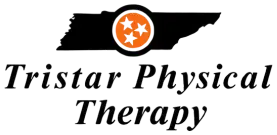Physical therapy (PT) can be a critical part of recovery from an injury or surgery, or managing a chronic condition. While in-person sessions with a physical therapist are valuable, at-home PT can also play an important role in your recovery journey. With the right approach and guidance, you can achieve great results from the comfort of your own home. Tristar, a leader in physical rehabilitation, offers expert advice for those looking to succeed with at-home PT.
At-Home PT: Setting Up for Success
Before diving into your at-home PT routine, it’s crucial to set up an environment conducive to success. First, designate a specific area in your home that is clean, spacious, and free of distractions. This will be your PT zone where you can focus solely on your exercises and recovery. Next, ensure you have the necessary equipment on hand, which may include resistance bands, a stability ball, or light weights. Your physical therapist can provide a list of recommended items. Lastly, establish a consistent schedule for your PT sessions, as regular practice is key to making progress.
Tristar’s Tips for Effective PT at Home
Tristar emphasizes the importance of following a personalized PT plan that addresses your unique needs and goals. Start by consulting with your physical therapist to develop a home exercise program tailored specifically for you. This plan should include a variety of exercises that target strength, flexibility, and balance. Additionally, prioritize proper form and technique over quantity; doing a few exercises correctly is more beneficial than doing many incorrectly. To stay motivated, track your progress, celebrate small victories, and remember that recovery is a marathon, not a sprint.
Another critical aspect of at-home PT is self-care. Listen to your body and avoid pushing through pain, as this can lead to further injury. Incorporate rest days into your routine to allow your body time to heal and recover. Moreover, stay connected with your physical therapist through virtual check-ins or calls to report on your progress and address any concerns. They can provide feedback, adjust your exercise program, and offer encouragement along the way.
At-home PT can be a powerful tool in your recovery arsenal when approached with the right mindset and preparation. By creating a dedicated space, following a personalized exercise plan, and listening to your body, you can achieve success in your rehabilitation journey. Tristar’s expert guide to at-home PT success provides the foundation you need to take charge of your recovery and make meaningful strides towards improved health and mobility.

